#death and the poetess
Explore tagged Tumblr posts
Text

The Death of Sappho by Antoine-Jean Gros
#antoine jean gros#art#sappho#ancient greek#ancient greece#history#classical antiquity#europe#european#lyre#poet#poetry#lefkada#cliffs#love#death#ancient#mediterranean#poets#sea#moon#moonlight#moonlit#night#sky#clouds#flame#fire#cliff#poetess
137 notes
·
View notes
Text
Review of my poem: Death's Door

View On WordPress
#Amazon.com#author#book#death#Death&039;s door#despair#isolation#loss#love#Malak Kalmoni Chehab#Perfectly Flawed: poetry for change#poetess#politicians#social problems#violence#war
3 notes
·
View notes
Text

#poetry#poetry book#dark acamedia#new poets society#sad poetry#spilled poetry#sad prose#dark poetry#dead poets society#spilled words#death bed#dark poem#painful#depression#poetess#womanhood
0 notes
Text
A poetry I wrote a couple years ago, in March when Corona was still discussed a lot. It's to people who chose to not quarantine and on top of that, they would mock those who did, call them fools and all in all would be troublesome toward them. Writing a few verses of this was quite cathartic even XD
It's perfectly understandable for those people to not quarantine who had to feed their families, who didn't have enough resources to quarantine but the rest, that didn't have a valid excuse



#coronavirus#covid19#poem#poetess#poetry#poetry corner#poets of tumblr#quarantine#danger#society#creative writing#writing#frustration#deaths#death poetry#social pressure
1 note
·
View note
Text
Hello and happy Pride Month everyone ! 🏳️🌈
As promised, I am going to talk about an important lesbian in history everyday. And this first post is about one of my favourite :
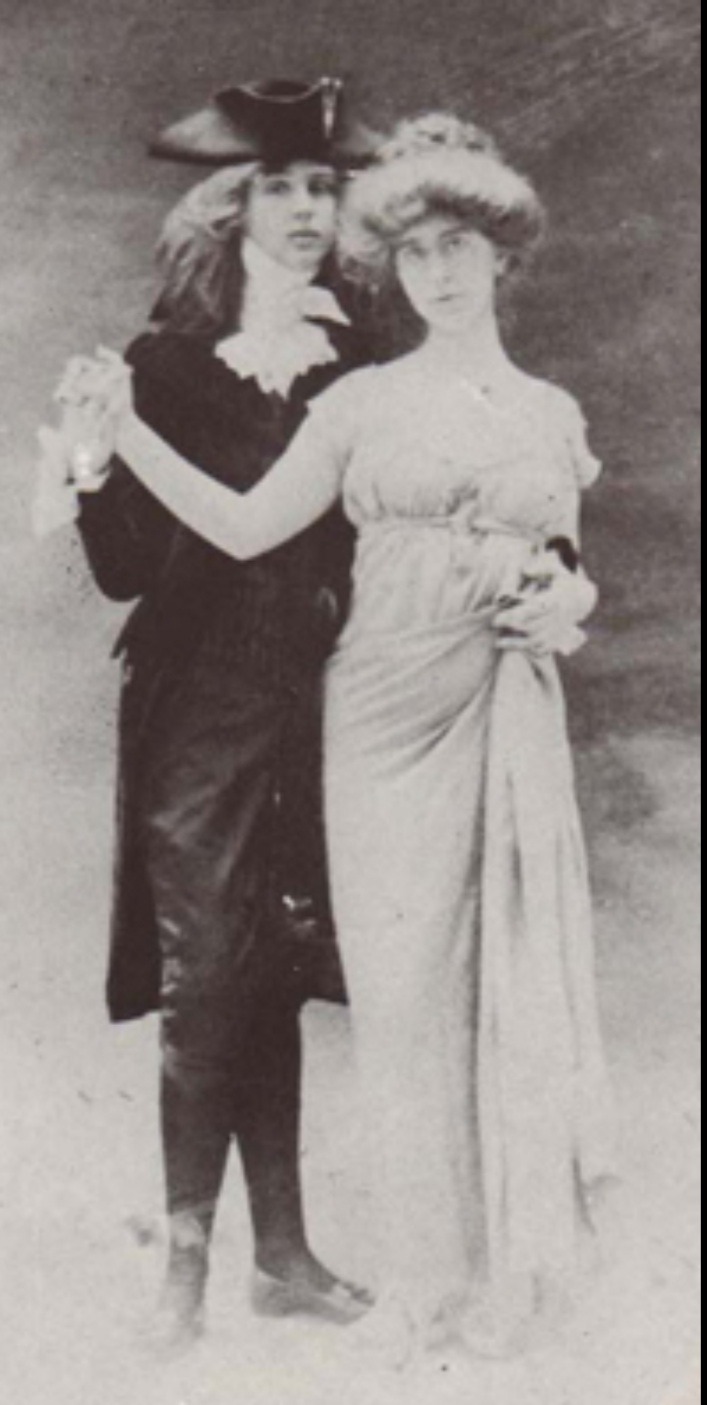
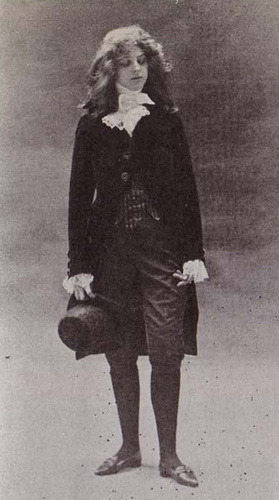
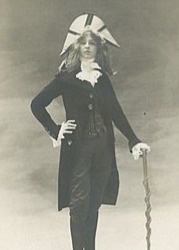
Renée Vivien !
I have seen some people talk about her here but she clearly isn’t as famous as she should be, and she deserves way more recognition!
Renée Vivien, whose birth name is Pauline Mary Tam, was a British writer poetess, who wrote her poetry (and most of her works) in french ; born in 1877, she died in 1909, at only 32 years old.
Renée was openly a lesbian, and she never tried to hide it despite the society she lived in being extremely homophobic and considering homosexuality as an illness. In her poetry, she mentions her love for women a lot, and wrote a lot of love poems for several of her lovers. This even earned her the nickname “Sappho 1900”. ("Sappho 1900, Sappho cent pour cent").
Of Sappho, she was by the way a huge fan : in 1903, she published the work "Sappho", in which the poet's Greek texts are followed by a French translation, as well as verses by Renée Vivien, which thus "completes" the remaining fragments of Sappho's writings. This collection greatly helped to anchor Sappho's work and her identity as a lesbian woman in our culture.
Her work consists of :
Twelve collections of poems, totalling more than 500 poems
Several translations of Greek poetesses (including Sappho)
Seven books of prose
Around ten novels (written under various pseudonyms)
A posthumously published collection of short Gothic tales (written in English this time)
A book about Anne Boleyn's life
It is also possible to read her diary and the letters she exchanged with her lovers, friends and other personalities of her time, including Natalie Clifford Barney, Colette, Kérimé Turkhan Pacha and others.
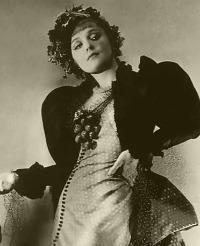
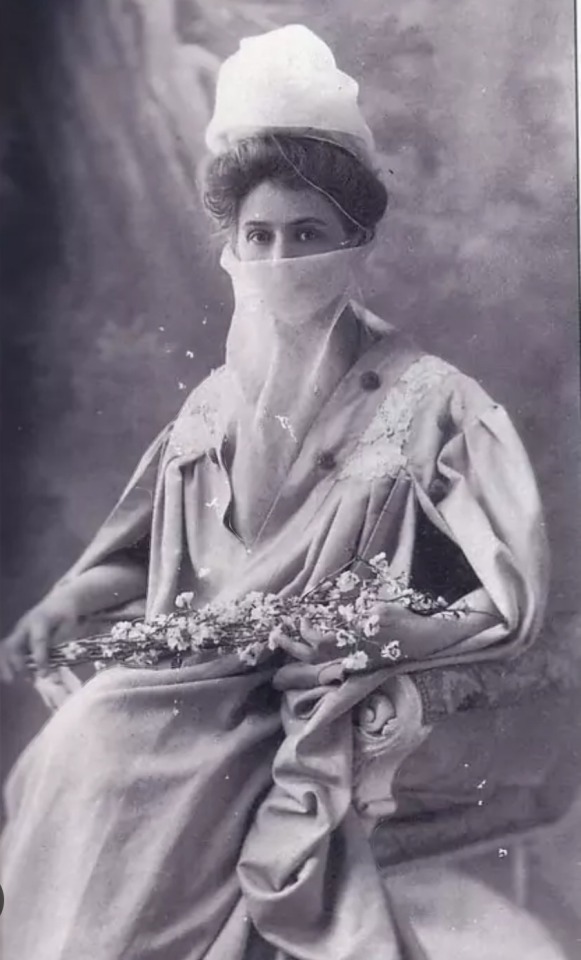
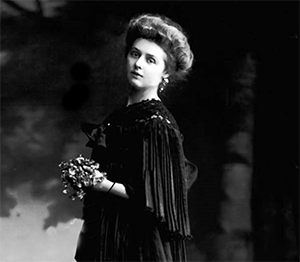
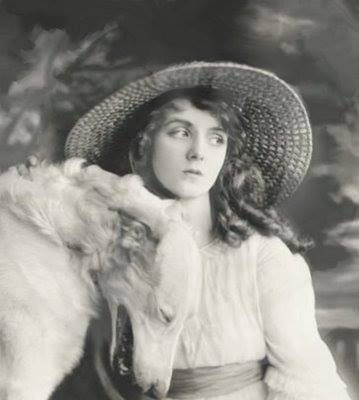
Pauline studied both in Paris and in London, then decided, once she came of age, to come and settle in Paris. She published her first collection,"Études et Préludes" in 1901, under the pseudonym R.Vivien. This pseudonym later became René Vivien (the male version of Renée) then Renée Vivien, the name under which she will be remembered. We can easily guess that she first chose these neutral then masculine pseudonyms to be able to write and be published despite the misogyny and homophobia of her time, especially given the themes exploited in her writings.
Sadness, death, ancient Greece, love, despair, solitude and love are the most recurrent themes in Renée's poems. There is actually a poetry prize in her name, the Prix Renée Vivien, which rewards poets whose themes and style are close to those of Renée Vivien.
Among Renée's best-known lovers is Natalie Clifford Barney, a famous writer and poet, with whom she had a relationship for several years before leaving her, tired of her infidelities. It is said that Natalie never accepted this breakup and tried until the end to get her back by all means, sending her love letters even years after.
Renée then had a relationship of more than six years with the rich Baroness Hélène de Zuylen, married and mother of two children, with whom she traveled extensively around the world and collaborated on the writing of several works (under the collective pseudonym Paule Riversdale). In a letter to her friend Jean Charles-Brun, Renée admitted that she considered herself married to Hélène.
While still living with the Baroness, she received a letter from a mysterious admirer, Kérimé Turkhan Pacha. What followed was an intense four-year epistolary relationship, interspersed with brief clandestine meetings. In 1908, however, Kérimé, the wife of a Turkish diplomat, put an end to their relationship when she had to follow her husband to St. Petersburg. This break-up probably contributed to Renée's tragic end.
The writer was in deep psychological distress, which only worsened from 1908 onwards. Alcoholic and suicidal, she began refusing to eat properly, and attempted suicide with laudanum. After this failed suicide attempt, she contracted pleurisy, which left her very weak, and then chronic gastritis due to her alcohol abuse. She gradually fell into anorexia, and, with her limbs paralyzed by multiple neuritis, she died on November 18, 1909, aged just 32. Her death was attributed to "pulmonary congestion", probably due to pneumonia complicated by alcohol and anorexia.
After her death, intellectuals, artists and newspapers, out of lesbophobia, tried to make her forgotten by the literary world, describing her as a woman of evil and damnation, perverse and cruel, going so far as to invent for her a life of crime, debauchery, orgies with married women, violence and cocaine consumption.
Today, Renée Vivien's name is no longer known to the general public, and is never mentioned alongside those of great ans famous poets such as Arthur Rimbaud or Charles Baudelaire, despite her gorgeous poetry, her immense talent and fascinating work.
She's personally my favourite, and not only because she was a lesbian. Her poetry is the most beautiful, interesting and deep poetry I have ever seen. She deserves to be as famous as Victor Hugo or Paul Eluard (and even more famous, in my opinion lol).
Here is one of her poems, with its english translation :
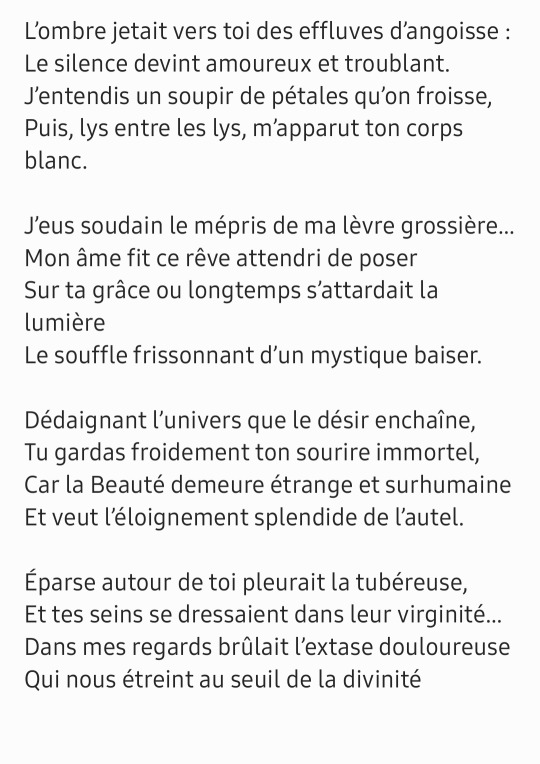
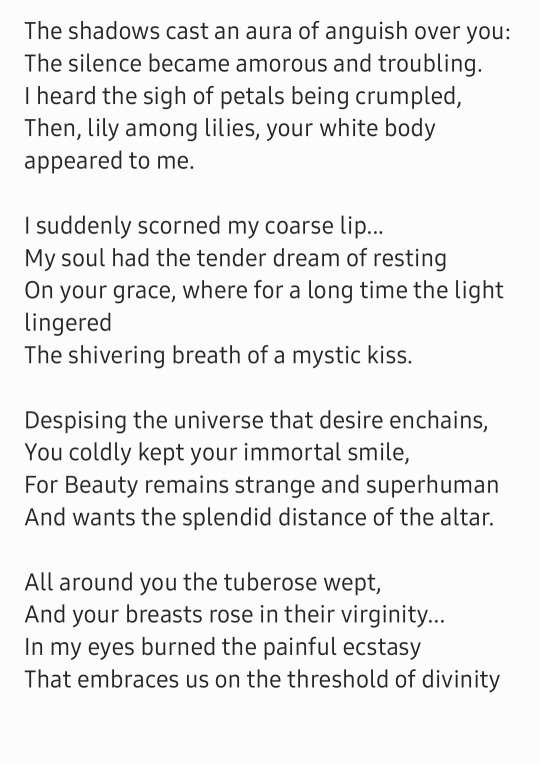
A link to some of her poems (in french but you can use a translator) ;
And two links with some of her poems translated into english : 1 and 2.
You should totally buy and read her books and poems, I have them and they're amazing!!! I'll post more translations of her poems in the future for those interested.
Anyway, thanks for reading and see you tomorrow for the second post!
#lesbian#renée vivien#renee vivien#pride#pride month#poetry#french poetry#poésie française#poésie#female homosexuality#female homosexual#lesbian history#lesbian artist
301 notes
·
View notes
Text

Portrait of Marusya Churai (by Fedir Panasovych Samusiv) - the legendary Ukrainian poetess and singer, the author of many famous songs of Bohdan Khmelnytśkyi times.
According to legend, Marusya Churai was born in 1625 (according to other versions, in 1628 or 1629) in the family of the kozak centurion Hordiy, one of the leaders of the anti-Polish uprising. After the death of her father, who was one of the foremen during the Ostryanin Uprising and was burned at the stake in Warsaw as a rebel in 1638, she remained to live with her mother in Poltava. Their house stood on the banks of the Vorskla, near the Khrestovozdvyzheńśkyi Monastery, which has survived to this day.
In her youth, the girl had many suitors, among whom was the young kozak Ivan Iskra, but she gave her heart to Hrytś Bobrenko (according to other versions, Hrytś Ostapenko), the son of a cornel of the Poltava regiment, to whom she later secretly became engaged. With the outbreak of Khmelnytśkyi in 1648, Hrytś went to war, promising to return. The girl waited for him for 4 years. However, when Hrytś returned to Poltava, he no longer paid attention to Marusya because he fell in love with another, Hannusya from a wealthy Poltava family. The betrayed girl could not bear the loss and decided to poison herself with a potion that she secretly took from a local old witch, but which Hrytś accidentally drank himself.
In the summer of 1652, the Poltava court sentenced Marusya to death for murdering Hrytś, but she was amnestied with the wagon of Bohdan Khmelnytśkyi, which was brought by Ivan Iskra. The text of the station wagon: "In the mind, no one loses whom he truly loves. Therefore, it is not necessary to punish without reason, and therefore I order: to count the head of Poltava governor Hordiy Churai, cut off by our enemies, for the sake of the wonderful songs that she (Marusya) composed. In the future, death sentences will not be carried out without my order. Marusya Churai should be released from custody." To do penance, the girl went to Kyiv for penance, but after returning to Poltava in 1653, she died at the age of 28, unable to bear the death of her beloved (according to other sources, in 1652 in Poltava from tuberculosis shortly after the amnesty, or she became a nun in one of the Ukrainian monasteries).
75 notes
·
View notes
Text
Famous/Important Women?
I'm trying to make a list of notable women in history (mostly for fun, partially to use against misogynists who think men did everything), and kinda not wanting to just look up a list online.
So; I'd like anyone who sees this post to add to the list. Even if all you can remember is a name and basic details, that's enough (I myself am mostly operating off memory, and then looking up details to fill in the blanks). If possible though, a date of birth/death and what they're most known for would be great, since those are the details I'm focusing on right now.
I'll add all new people/details to a list here on Tumblr so we're all on the same page info-wise.
Edit; pinning this post both so I don't have to scroll millions of miles and so it's easier for people to find (I should probably be pinning my intro post instead but whatever).
List so far:
Enheduanna (𒂗𒃶𒌌𒀭𒈾), Birthdate unknown (c. 23rd century BCE), death date unknown (c. 23rd century BCE). High Priestess of Nanna/Sin (Sumerian Moon God), Daughter of Sargon (Founder of the Akkadian Empire), Earliest Known Named Author in History.
Nitocris (Greek: Νίτωκρις). Birthdate Unknown (c. 22nd century BCE), death date unknown (c. 22nd century BCE). Possible Queen of Egypt; If So, Would Have Been the Last Queen of the Sixth Dynasty of the Old Kingdom (c.2686 – 2181 BC).
Sobekneferu (Neferusobek). Birthdate unknown (mid 18th century BC), death date unknown (mid 18th century BC). Queen of Egypt, the Last Ruler of the Twelfth Dynasty of the Middle Kingdom, Reign Lasted 3 Years, 10 Months, and 24 days, Ending in c. 1802 BC.
Hatshepsut. Born ~1507 BC, died 1458 BC. Queen of Egypt (c. 1479 – 1458 BC), Fifth Pharaoh of the 18th Dynasty of Egypt, Prolific Builder, Reigned in Peace and Prosperity.
Sappho (Modern Greek: Σαπφώ (Sapphṓ), Aeolic Greek: Ψάπφω (Psápphō)). Born c. 630 BC, died c. 570 BC. Ancient Greek Poetess, Famous for Love Poems, Symbol of Lesbian Love, Known as “The Tenth Muse”.
Timarete (Thamyris, Tamaris, Thamar (Greek: Τιμαρέτη)). Birthdate unknown (c. 5th century BC), death date unknown (c. 5th century BC). Ancient Greek Painter; According to Pliny the Elder, She "Scorned the Duties of Women and Practiced Her Father's Art." At the Time of Archelaus I of Macedon She Was Best Known for a Panel Painting of the Goddess Diana That Was Kept at the City of Ephesus.
Helena of Egypt. Birthdate unknown (4th century BC), death date unknown (c. 4th century BC). Painter, Learned From Her Father, Worked in the Period After the Death of Alexander the Great in 323 BC, Painted a Scene of Alexander Defeating the Persian Ruler, Darius III, at the Battle of Issus.
Kalypso. Birthdate unknown (c. 3rd century BC), death date unknown. Supposed Ancient Greek Painter (existence disputed).
Aristaineta. Birthdate unknown (3rd century BCE), death date unknown (3rd century BCE). Aetolian Woman, Dedicated a Large Monument at the Sanctuary of Apollo at Delphi Which Included Her Mother, Father, Son, and Herself, Which Was a Symbol of Social Status Usually Reserved For the Male Head of the Family.
The Vestal Three (Aemilia, Licinia and Marcia). Born in the 2nd century BC, died December, 114 BC (Aemilia), and 113 BC (Licinia and Marcia). Roman Vestal Virgins (Priestesses), Prosecuted For Having Broken the Vow of Chastity in Two Famous Trials Between 115 and 113 BC.
Iaia of Cyzicus (Ιαία της Κυζίκου). Born c. 2nd century BC, died c. 1st century BC. Famous Greek Painter and Ivory Carver, Most of Her Paintings are Said to Have Been of Women. According to Pliny the Elder; "No One Had a Quicker Hand Than She in Painting." Remained Unmarried All Her Life.
Cleopatra (Cleopatra VII Thea Philopator). Born ~69 BC, died August 10, 30 BC. Queen of Egypt (51 – 30 BC), Last Active Ruler of the Ptolemaic Kingdom of Egypt, Only Known Ptolemaic Ruler to Learn the Egyptian Language.
Soseono (소서노) (Yeon Soseono (연소서노)). Born 66/7 BCE, died 6 BCE. Queen Consort of Goguryeo, One of the Three Kingdoms of Korea (37 – 18 BC), Queen dowager of Baekje (Another of the Three Kingdoms) (18 – 6 BC), Founder of Baekje (18 BC).
Heo Hwang-ok (허황옥) (Empress Boju (보주태후)). Born 32 AD, died 189 AD. Legendary Queen of Geumgwan Gaya, Mentioned in Samguk yusa (a 13th-Century Korean Chronicle), Believed to Originally be From India.
Septimia Zenobia (𐡡𐡶𐡦𐡡𐡩, Bat-Zabbai). Born ~240, died ~274. Queen of Palmyra (267 – 272), Queen of Egypt (270 – 272), Empress of Palmyra (272).
Hypatia. Born c. 350–370 AD, died March, 415 AD. Neoplatonist Philosopher, Astronomer, and Mathematician, Prominent Thinker in Alexandria, Taught Philosophy and Astronomy, Beloved by Pagans and Christians Alike.
Seondeok of Silla (선덕여왕) (Kim Deokman (덕만)). Born c. 580 or 610, died 20 February, 647. Queen of Silla, One of the Three Kingdoms of Korea (632 – 647), Silla's Twenty-Seventh Ruler and First Reigning Queen, Known as a Wise and Kind Monarch.
Jindeok of Silla (진덕여왕) (Kim Seungman (김승만)). Birthdate unknown, died 654. Queen of Silla, One of the Three Kingdoms of Korea (647 – 654), Silla’s Twenty-Eighth Ruler and Second Reigning Queen, Greatly Improved Relations With China.
Jinseong of Silla (진성여왕) (Kim Man (김만)). Born c. 865, died 897. Queen of Silla, One of the Three Kingdoms of Korea (887-897), Silla’s Fifty-First Ruler, Third and Last Reigning Queen, Said to be Smart by Nature, But Whose Reign Saw the Weakening of Unified Silla.
Ende (En). Born c. 10th Century AD, died c. 10th Century AD. First Spanish Female Manuscript Illuminator to Have Her Work Documented Through Inscription.
Diemoth (Latinized: Diemudus, Diemut, Diemud, Diemuth, Diemod or Diemudis). Born c. 1060, died c. 30 March, 1130. Recluse at Wessobrunn Abbey in Upper Bavaria, Germany, Worked on 45 Manuscripts From 1075 to 1130.
Lǐ Qīngzhào (李清照) (a.k.a. Yian Jushi (易安居士)). Born 1084, died c.1155. Chinese Poet and Essayist, Defiant Visionary, Known as “The Most Talented Woman In History.”
Gunnborga (a.k.a Gunnborga den Goda (literary: 'Gunnborga the Good')). Born c. 11th century, died c. 11th century. Viking Age Swedish Runemaster, Responsible for the Hälsingland Rune Inscription 21, Known as the Only Confirmed Female Runemaster.
Hildegard of Bingen (German: Hildegard von Bingen, Latin: Hildegardis Bingensis, a.k.a Saint Hildegard/the “Sibyl of the Rhine”). Born c. 1098, died 17 September, 1179. German Benedictine Abbess and Polymath, Active as a Writer, Composer, Philosopher, Mystic, Visionary, and Medical Writer/Practitioner During the High Middle Ages.
Matilda of England (Empress Matilda, Empress Maude, the “Lady of the English”). Born c. 7 February, 1102, died 10 September, 1167. Holy Roman Empress (1114 – 1125), Disputed Queen of England (1141 – 1148).
Guda. Born 12th Century AD, died 12th Century AD. German Nun and Illuminator, One of the First Women to Create a Self-Portrait in a Manuscript.
Herrad of Landsberg (Latin: Herrada Landsbergensis). Born c. 1130, died July 25, 1195. Alsatian Nun and Abbess of Hohenburg Abbey in the Vosges Mountains, Known as the Author of the Pictorial Encyclopedia Hortus Deliciarum (The Garden of Delights) (completed in 1185).
Claricia (Clarica). Born c. 12th Century AD, died c. 13th Century AD. German Laywoman and Illuminator, Noted for Including a Self-Portrait in a South German Psalter of c. 1200.
Jefimija (Јефимија) (Jelena Mrnjavčević (Serbian Cyrillic: Јелена Мрњавчевић)). Born 1349, died 1405. Considered the First Female Serbian Poet. Her Lament for a Dead Son and Encomium of Prince Lazar are Famous in the Canon of Medieval Serbian Literature. Also a Skilled Needlewoman and Engraver.
Christine de Pizan (Cristina da Pizzano). Born September, 1364, died c. 1430. Italian-Born French Poet and Court Writer for King Charles VI of France and Several French Dukes. Considered to be One of the Earliest Feminist Writers; Her Work Includes Novels, Poetry, and Biography, and also Literary, Historical, Philosophical, Political, and Religious Reviews and Analyses.
Joan of Arc (Jeanne d’Arc, Jehanne Darc). Born ~1412, died 30 May, 1431. French Knight, Martyr, and Saint, Burned at the Stake.
Catherine of Bologna (Caterina de' Vigri). Born 8 September, 1413, died 9 March, 1463. Italian Poor Clare, Writer, Teacher, Mystic, Artist, and Saint; The Patron Saint of Artists and Against Temptations.
Elena de Laudo. Born c. 15th Century AD, died c. 15th Century AD. Venetian Glass Artist, Belonged to a Glass Painter Family of Murano, is Noted to Have Painted Blanks Delivered to Her From the Workshop of Salvatore Barovier in 1443–1445.
Maria Ormani (Maria di Ormanno degli Albizzi). Born 1428, died c. 1470. Italian Augustinian Hermit Nun-Scribe and Manuscript Illustrator, Most Notable Work is an Apparent Self-Portrait in a Breviary That She Signed and Dated 1453; the Earliest Dated Self-Portrait by a Woman Artist in Italian Renaissance Art.
Sister Barbara Ragnoni (Suor Barbara Ragnoni). Born 1448, died 1533. Italian Nun and Artist for Whom Only One Work Remains Extant; Her Signed Painting, The Adoration of the Shepherds (c. 1500).
Antonia Uccello. Born 1456, died 1491. Carmelite Nun, Noted as a "Pittoressa" (Painter) on Her Death Certificate; Her Style and Skill Remain a Mystery as None of Her Work is Extant.
Marietta Barovier. Born 15th Century AD, died c. 15th/16th Century AD. Venetian Glass Artist, the Artist Behind a Particular Glass Design from Venetian Murano; the Glass Bead Called Rosette or Chevron Bead, in 1480. In 1487 She Was Noted to Have Been Given the Privilege to Construct a Special Kiln (Sua Fornace Parrula) for Making "Her Beautiful, Unusual and Not Blown Works".
Catherine of Aragon (Katherine, Catharina, Catalina). Born 16 December, 1485, died 7 January, 1536. First Wife of King Henry VIII, Queen Consort of England (1509 – 1533).
Properzia de' Rossi. Born c. 1490, died 1530. Ground-Breaking Female Italian Renaissance Sculptor, One of Only Four Women to Receive a Biography in Giorgio Vasari's Lives of the Artists.
Anne Boleyn. Born c. 1501 or 1507, died 19 May, 1536. Second Wife of King Henry VIII, Queen Consort of England (1533 – 1536), Martyr, Executed on False Charges.
Jane Seymour. Born c. 1508, died 24 October, 1537. Third Wife of King Henry VIII, Queen Consort of England (1536 – 1537), Died of Postnatal Complications.
Levina Teerlinc. Born in the 1510s, died 23 June, 1576. Flemish Renaissance Miniaturist who Served as a Painter to the English Court of Henry VIII, Edward VI, Mary I and Elizabeth I.
Catherine Parr (Kateryn Parr). Born c. August, 1512, died 5 September, 1548. Sixth Wife of King Henry VIII, Queen Consort of England and Ireland (1543 – 1547), First English Woman to Publish an Original Work Under Her Own Name, Widowed, Remarried, Died in Childbirth.
Anne of Cleves (Anna von Kleve). Born 28 June or 22 September, 1515, died 16 July, 1557. Fourth Wife of King Henry VIII, Queen Consort of England (6 January 1540 – 12 July 1540), Marriage Annulled, Outlived All Other Wives.
Mary I of England (Mary Tudor). Born 18 February, 1516, died 17 November, 1558. First Undisputed Regnant Queen of England and Ireland (1553 – 1558), Daughter of Henry VIII and Catherine of Aragon.
Mayken Verhulst (a.k.a. Marie Bessemers). Born 1518, died 1596 or 1599. 16th-Century Flemish Miniature, Tempera and Watercolor Painter and Print Publisher, Actively Engaged in the Workshop of Her Husband, Posthumously Publishing His Works. While Recognized as an Exceptionally Skilled Artist, Little is Known About Her Works or Life as There are Few Surviving Sources.
Catherine Howard (Katheryn Howard). Born c. 1523, died 13 February, 1542. Fifth Wife of King Henry VIII, Queen Consort of England (1540 – 1541), Stripped of Title, Beheaded for ‘Treason’.
Sister Plautilla Nelli (Pulisena Margherita Nelli). Born 1524, died 1588. Self-Taught Nun-Artist, the First Ever Known Female Renaissance Painter of Florence, and the Only Renaissance Woman Known to Have Painted the Last Supper.
Caterina van Hemessen (Catharina van Hemessen). Born 1528, died after 1565. Flemish Renaissance Painter, the Earliest Female Flemish Painter for Whom There is Verifiable Extant Work, Possibly Created the First Self-Portrait of an Artist (of Either Gender) Depicted Seated at an Easel (1548).
Sofonisba Anguissola (a.k.a Sophonisba Angussola or Sophonisba Anguisciola). Born c. 1532, died 16 November, 1625. Italian Renaissance Painter, Born to a Relatively Poor Noble Family, Got a Well-Rounded Education That Included the Fine Arts; Her Apprenticeship With Local Painters Set a Precedent for Women to be Accepted as Students of Art.
Elizabeth I of England (Elizabeth Tudor, the “Virgin Queen”). Born 7 September, 1533, died 24 March, 1603. Regnant Queen of England and Ireland (1558 – 1603), Last Monarch of the House of Tudor, Daughter of Henry VIII and Anne Boleyn.
Lucia Anguissola. Born 1536 or 1538, died c. 1565 – 1568. Italian Mannerist Painter of the Late Renaissance, Younger Sister of Sofonisba, Who She Likely Trained With.
Lady Jane Grey (Lady Jane Dudley (married name)). Born ~1537, died 12 February, 1554. Queen of England for ~9 days (~10 July, 1553 – 19 July, 1553) (disputed), First Cousin Once Removed of Mary I and Elizabeth I.
Mary, Queen of Scots (Mary Stuart). Born 8 December, 1542, died 8 February, 1587. Queen of Scotland (1542 – 1567), Forced Abdication, Imprisonment, Execution.
Diana Scultori (a.k.a Diana Mantuana & Diana Ghisi). Born 1547, died 5 April, 1612. Italian Engraver From Mantua, Italy; One of the Earliest Known Women Printmakers, Making Mostly Reproductive Engravings of Well-Known Paintings/Drawings and Ancient Roman Sculptures.
Lavinia Fontana. Born 24 August, 1552, died 11 August, 1614. Italian Mannerist Painter, Active in Bologna and Rome, Best Known for Her Successful Portraiture, but Also Worked in the Genres of Mythology and Religious Painting, Regarded as the First Female Career Artist in Western Europe.
Barbara Longhi. Born 21 September, 1552, died 23 December, 1638. Italian Painter, Much Admired in Her Lifetime as a Portraitist, Though Most of Her Portraits are Now Lost or Unattributed.
Marietta Robusti. Born 1560, died 1590. Highly Skilled Venetian Painter of the Renaissance Period, the Daughter of Tintoretto (Jacobo Robusti), Sometimes Referred to as Tintoretta.
Elizabeth Báthory (Báthori Erzsébet). Born 7 August, 1560, died 21 August, 1614. Hungarian Countess, Subject of Folklore, Alleged Serial Killer.
Esther Inglis. Born 1571, died 1624. Skilled Artisan and Miniaturist Who Possessed Several Skills in Areas Such as Calligraphy, Writing, and Embroidering; Over the Course of Her Life, She Composed Around Sixty Miniature Books That Display Her Calligraphic Skill With Paintings, Portraits, and Embroidered Covers.
Galizia (Fede Galizia). Born c. 1578, died c. 1630. Italian Painter of Still-Lifes, Portraits, and Religious Pictures, Especially Noted as a Painter of Still-Lifes of Fruit, a Genre in Which She Was One of the Earliest Practitioners in European Art.
Izumo no Okuni (出雲 阿国). Born c. 1578, died c. 1613. Actress, Shrine Maiden, Creator of Kabuki Theater (1603 – 1610), Recruited Lower-Class Women For Her Troupe, Primarily Prostitutes.
Clara Peeters. Born c. 1580s/90s, death date unknown. Flemish Still-Life Painter From Antwerp Who Worked in Both the Spanish Netherlands and Dutch Republic. Was the Best-Known Female Flemish Artist of This Era and One of the Few Women Artists Working Professionally in 17th-Century Europe, Despite Restrictions on Women's Access to Artistic Training and Membership in Guilds.
Artemisia Gentileschi (Artemisia Lomi). Born 8 July, 1593, died c. 1656. Italian Baroque Painter, Considered Among the Most Accomplished 17th-Century Artists, Making Professional Work by Age 15. In an Era When Women Had Few Chances to Pursue Artistic Training/Work as Professional Artists, She Was the First Woman to Become a Member of the Accademia di Arte del Disegno and Had an International Clientele. Much of Her Work Features Women From Myths, Allegories, and the Bible, Including Victims, Suicides, and Warriors.
Magdalena van de Passe. Born 1600, died 1638. Dutch Engraver, Member of the Van de Passe Family of Artists From Cologne, Active in the Northern Netherlands. Specialized in Landscapes and Portraits, and Trained the Polymath Anna Maria van Schurman in Engraving, One of the Few Known Early Examples of the Training of One Woman Artist by Another.
Giovanna Garzoni. Born 1600, died 1670. Italian Painter of the Baroque Period; Began Her Career Painting Religious, Mythological, and Allegorical Subjects but Gained Fame For Her Botanical Subjects Painted in Tempera and Watercolor.
Michaelina Wautier (Michaelina Woutiers). Born 1604, died 1689. Baroque Painter From the Southern Netherlands (now Belgium), Noted For the Variety of Subjects and Genres She Worked in, Unusual For Female Artists of the Time, Who Were More Often Restricted to Smaller Paintings, Generally Portraits or Still-Lifes.
Judith Leyster (Judith Jans Leyster (also Leijster)). Born in July, 1609, died February 10, 1660. Dutch Golden Age Painter of Genre Works, Portraits, and Still-Lifes. Her Work Was Highly Regarded by Her Contemporaries, but Largely Forgotten After Her Death. Her Entire Oeuvre Came to be Attributed to Frans Hals or to Her Husband, Jan Miense Molenaer. In 1893, She Was Rediscovered and Scholars Began to Attribute Her Works Correctly.
Louise Moillon. Born 1610, died 1696. French Still-Life Painter in the Baroque Era, Became Known as One of the Best Still-Life Painters of Her Time, Her Work Purchased by King Charles I of England, as Well as French Nobility.
Catharina Peeters. Born 1615, died 1676. Flemish Baroque Painter, Noted For Painting Seascapes.
Katharina Pepijn (Catharina Pepijn). Born in February, 1619, died 12 November, 1688. Flemish Painter Who Was Known For Her History Paintings and Portraits.
Josefa de Óbidos (Josefa de Ayala Figueira). Born c. January, 1630, died 22 July, 1684. Spanish-Born Portuguese Painter. All of Her Work Was Executed in Portugal, Her Father's Native Country, Where She Lived From the Age of Four. Approximately 150 Works of Art Have Been Attributed to Her, Making Her One of the Most Prolific Baroque Artists in Portugal.
Maria van Oosterwijck (Maria van Oosterwyck). Born 20/27 August, 1630, died 1693. Dutch Golden Age Painter, Specializing in Richly-Detailed Flower Paintings and Other Still-Lifes. Despite the Fact That Her Paintings Were Highly Sought Out by Collectors (Including Royalty), She Was Denied Membership in the Painters' Guild Because Women Weren’t Allowed to Join. Stayed Single Throughout Her Life, but Raised Her Orphaned Nephew.
Johanna Vergouwen (Jeanne Vergouwen, Joanna Vergouwen). Born 1630, died 11 March, 1714. Flemish Baroque Painter, Copyist, and Art Dealer.
Mary Beale (née Cradock). Born in late March, 1633, died 8 October, 1699. English Portrait Painter and Writer, Part of a Small Band of Female Professional Artists Working in London. Her Manuscript Observations (1663), on the Materials and Techniques Employed "in Her Painting of Apricots", Though Not Printed, is the Earliest Known Instructional Text in English Written by a Female Painter.
Elisabetta Sirani. Born 8 January, 1638, died 28 August, 1665. Italian Baroque Painter and Printmaker Who Died in Unexplained Circumstances at the Age of 27. She Was One of the First Women Artists in Early Modern Bologna, and Established an Academy for Other Women Artists.
Maria Theresia van Thielen. Born 7 March, 1640, died 11 February, 1706. Flemish Baroque Painter, Known for Several Flower Pieces and Outdoor Still-Lifes Painted in the Style of Her Father, Jan Philip van Thielen.
Anna Maria van Thielen. Born 1641, death date unknown. Flemish Baroque Painter and Nun, Younger Sister of Maria Theresia, Older Sister of Fransisca Catharina.
Maria Borghese (Maria Virginia Teresa Borghese). Born 1642, died 1718. Italian Baroque Artist, Daughter of Art Collector Olimpia Aldobrandini.
Francisca Catharina van Thielen. Born 1645, death date unknown. Flemish Baroque Painter and Nun, Younger Sister of Maria Theresia and Anna Maria.
Maria Sibylla Merian. Born 2 April, 1647, died 13 January, 1717. German Entomologist, Naturalist and Scientific Illustrator, One of the Earliest European Naturalists to Document Observations About Insects Directly.
Élisabeth Sophie Chéron. Born 3 October, 1648, died 3 September, 1711. Remembered Today Primarily as a French Painter, but She Was a Renaissance Woman, Acclaimed in Her Lifetime as a Gifted Poet, Musician, Artist, and Academician.
Luisa Roldán (Luisa Ignacia Roldán, a.k.a La Roldana). Born 8 September, 1652, died 10 January, 1706. Spanish Sculptor of the Baroque Era, the Earliest Woman Sculptor Documented in Spain. Recognized in the Hispanic Society Museum For Being "One of the Few Women Artists to Have Maintained a Studio Outside the Convents in Golden Age Spain".
Rachel Ruysch. Born 3 June, 1664, died 12 October, 1750. Dutch Still-Life Painter From the Northern Netherlands. She Specialized in Flowers, Inventing Her Own Style and Achieving International Fame in Her Lifetime. Due to a Long, Successful Career That Spanned Over Six Decades, She Became the Best-Documented Woman Painter of the Dutch Golden Age.
Anne, Queen of Great Britain. Born 6 February, 1665, died 1 August, 1714. Queen of England, Scotland, and Ireland (1702 – 1707), First Queen of Great Britain and Ireland (1707 – 1714).
Isabel de Cisneros (Isabel de Santiago). Born 1666, died c. 1714. Criollo Colonial Painter Born in the Colony of Quito (Ecuador), Specialized in Oil Paintings of the Childhood of the Virgin and of the Baby Jesus, Adorned With Flowers and Animals.
Rosalba Carriera. Born 12 January, 1673, died 15 April, 1757. Venetian Rococo Painter; In Her Younger Years She Specialized in Portrait Miniatures, Would Later Become Known For Her Pastel Portraits, Helping Popularize the Medium in 18th-Century Europe. She is Remembered as One of the Most Successful Women Artists of Any Era.
Giulia Lama (Giulia Elisabetta Lama). Born 1 October, 1681, died 7/8 October, 1747. Italian Painter, Active in Venice. Her Dark, Tense Style Contrasted With the Dominant Pastel Colors of the Late Baroque Era. She Was One of the First Female Artists to Study the Male Figure Nude.
Anna Dorothea Therbusch (born Anna Dorothea Lisiewski (Polish: Anna Dorota Lisiewska)). Born 23 July, 1721, died 9 November, 1782. Prominent Rococo Painter Born in the Kingdom of Prussia (Modern-Day Poland). About 200 of Her Works Survive, and She Painted at Least Eighty-Five Verified Portraits.
Catherine the Great (Catherine II, Екатерина Алексеевна (Yekaterina Alekseyevna), born Princess Sophie Augusta Frederica von Anhalt-Zerbst). Born 2 May, 1729, died 17 November, 1796. Reigning Empress of Russia (1762 – 1796), Came to Power After Overthrowing Her Husband, Peter III. Under Her Long Reign, Russia Experienced a Renaissance of Culture and Sciences.
Ulrika Pasch (Ulrika "Ulla" Fredrica Pasch). Born 10 July, 1735, died 2 April, 1796. Swedish Rococo Painter and Miniaturist, and a Member of the Royal Swedish Academy of Arts.
Angelica Kauffman (Maria Anna Angelika Kauffmann). Born 30 October, 1741, died 5 November, 1807. Swiss Neoclassical Painter Who Had a Successful Career in London and Rome. Remembered Primarily as a History Painter, She Was a Skilled Portraitist, Landscape and Decoration Painter. She Was, Along With Mary Moser, One of Two Female Painters Among the Founding Members of the Royal Academy in London in 1768.
Mary Moser. Born 27 October, 1744, died 2 May, 1819. English Painter and One of the Most Celebrated Female Artists of 18th-Century Britain. One of Only Two Female Founding Members of the Royal Academy in 1768 (Along With Angelica Kauffman), She Painted Portraits But is Particularly Noted For Her Depictions of Flowers.
Anne Vallayer-Coster. Born 21 December, 1744, died 28 February, 1818. Major 18th-Century French Painter, Best Known For Still-Lifes. She Achieved Fame and Recognition Very Early in Her Career, Being Admitted to the Académie Royale de Peinture et de Sculpture in 1770, at the Age of Twenty-Six. Her Life Was Determinedly Private, Dignified and Hard-Working.
Adélaïde Labille-Guiard (née Labille/a.k.a Adélaïde Labille-Guiard des Vertus). Born 11 April, 1749, died 24 April, 1803. French Miniaturist and Portrait Painter, Was an Advocate for Women to Receive the Same Opportunities as Men to Become Great Painters. She Was One of the First Women to Become a Member of the Royal Academy, and Was the First Female Artist to Receive Permission to Set Up a Studio for Her Students at the Louvre.
Marianne Mozart (Maria Anna Walburga Ignatia Mozart). Born 30 July, 1751, died 29 October, 1829. Musician (c. 1759 – 1769), Music Teacher (1772 – 1829), Sister of Wolfgang Amadeus Mozart.
Élisabeth Vigée Le Brun (Élisabeth Louise Vigée Le Brun, born Élisabeth Louise Vigée, a.k.a. Louise Élisabeth Vigée Le Brun, Madame Le Brun). Born 16 April, 1755, died 30 March, 1842. French Painter Who Mostly Specialized in Portrait Painting, in the Late 18th/Early 19th Centuries, Made a Name For Herself in Ancien Régime Society by Serving as the Portrait Painter to Marie Antoinette, Enjoyed the Patronage of European Aristocrats, Actors, and Writers, and Was Elected to Art Academies in Ten Cities.
Marie Antoinette (Maria Antonia). Born 2 November, 1755, died 16 October, 1793. Last Queen of France (1774 – 1792), Bad Reputation, Executed by Guillotine.
Maria Cosway (Maria Luisa Caterina Cecilia Cosway (née Hadfield)). Born 11 June, 1760, died 5 January, 1838. Italian-English Painter, Musician, and Educator, Worked in England, France, and Later Italy, Cultivating a Large Circle of Friends and Clients. Founded a Girls' School in Paris (Dir. 1803 – 1809). Soon After it Closed, She Founded a Girls' College and School in Lodi, Northern Italy, Which She Directed Until Her Death.
Marguerite Gérard. Born 28 January, 1761, died 18 May, 1837. French Painter and Printmaker Working in the Rococo Style; More Than 300 Genre Paintings, 80 Portraits, and Several Miniatures Have Been Documented to Her.
Marie-Gabrielle Capet. Born 6 September, 1761, died 1 November, 1818. French Neoclassical Painter, Pupil of the French Painter Adélaïde Labille-Guiard in Paris. Excelled as a Portrait Painter; Her Works Include Oil Paintings, Watercolors, and Miniatures.
Anna Rajecka (a.k.a Madame Gault de Saint-Germain). Born c. 1762, died 1832. Polish Portrait Painter and Pastellist, Raised as a Protégée of King Stanisław August Poniatowski of Poland; In 1783, She Was Enrolled at His Expense at the Art School for Women at the Louvre in Paris. Chose to Stay in Paris After Marrying Miniaturist Pierre-Marie Gault de Saint-Germain in 1788. Became the First Polish Woman to Have Her Work Represented at the Salon in 1791.
Marie-Guillemine Benoist (born Marie-Guillemine Laville-Leroux), Born December 18, 1768, died October 8, 1826. French Neoclassical, Historical, and Genre Painter, Student of Élisabeth Vigée Le Brun.
Adèle Romany (born Jeanne Marie Mercier, a.k.a. Adèle Romanée, Adèle de Romance). Born 7 December, 1769, died 6 June, 1846. French Painter Known for Miniatures and Portraits, Especially Those of People Involved in Performing Arts.
Marie-Denise Villers (Marie-Denise "Nisa" Lemoine). Born 1774, died 19 August, 1821. French Painter Who Specialized in Portraits. In 1794, She Married an Architecture Student, Michel-Jean-Maximilien Villers. Her Husband Supported Her Art, During a Time When Many Women Were Forced to Give Up Professional Art Work After Marriage.
Constance Mayer (Marie-Françoise Constance Mayer La Martinière). Born 9 March, 1775, died 26 May, 1821. French Painter of Portraits, Allegorical Subjects, Miniatures and Genre Works. She Had "a Brilliant But Bitter Career."
Jane Austen. Born 16 December, 1775, died 18 July, 1817. English Novelist, Author of Sense and Sensibility (1811), Pride and Prejudice (1813), etc, Known For Her Subtle Criticism of the Nobility of the Time.
Marie Ellenrieder. Born 20 March, 1791, died 5 June, 1863. German Painter Known For Her Portraits and Religious Paintings, Considered to be the Most Important German Woman Artist of Her Time.
Louise-Adéone Drölling (Madame Joubert). Born 29 May, 1797, died 20 March, 1834. French Painter and Draftswoman. Both Her Father and Older Brother Were Celebrated Artists in Their Day; She Herself Was Not a Very Prolific Painter.
Mary Shelley (Mary Wollstonecraft Shelley, née Godwin). Born 30 August, 1797, died 1 February 1851. English Novelist, Author of Frankenstein (1818), Which is Considered One of the Earliest Examples of Science Fiction.
Elizabeth Barrett Browning. Born 6 March, 1806, died 29 June, 1861. Influential Poet, Author of How Do I Love Thee (Sonnet 43, 1845) and Aurora Leigh (1856).
Ada Lovelace (Augusta Ada King, née Byron, Countess of Lovelace). Born 10 December, 1815, died 27 November, 1852. Mathematician, Writer, First to Think of Other Uses for Computing Besides Mathematical Calculations.
Victoria I (Alexandrina Victoria). Born 24 May, 1819, died 22 January, 1901. Queen of England (1837 – 1901), Longest Reign of All Predecessors.
Florence Nightingale. Born May 12, 1820, died August 13, 1910. English Nurse, Pioneer of Modern Nursing, Statistics, and Social Reformation (~1853 – ?).
Rosa Bonheur. Born 16 March, 1822, died 25 May, 1899. French Artist Known Best as a Painter of Animals (Animalière). She Also Made Sculptures in a Realist Style. Was Widely Considered to be the Most Famous Female Painter of the Nineteenth Century. It’s Been Claimed That She Was Openly Lesbian, as She Lived With Her Partner Nathalie Micas For Over 40 Years Until Micas's Death.
Barbara Bodichon. Born 8 April, 1827, died 11 June, 1891. English Educationalist, Artist, and a Leading Mid-19th-Century Feminist and Women's Rights Activist. She Published Her Influential Brief Summary of the Laws of England concerning Women in 1854 and the English Woman's Journal in 1858, and Co-Founded Girton College, Cambridge (1869).
Emily Dickinson (Emily Elizabeth Dickinson). Born December 10, 1830, died May 15, 1886. American Poet, Little-Known During Her Lifetime, Most Works Published Posthumously and Heavily Edited, Later Regarded as One of the Most Important Figures In American Poetry.
Louisa May Alcott. Born November 29, 1832, died March 6, 1888. American Novelist, Short Story Writer, Poet, Author of Little Women (1868), Abolitionist, Feminist, Active in Temperance and Women’s Suffrage Movements.
Elizabeth Jane Gardner (Elizabeth Jane Gardner Bouguereau (married name)). Born October 4, 1837, died January 28, 1922. American Academic and Salon Painter, Born in Exeter, New Hampshire. She Was the First American Woman to Exhibit and Win a Gold Medal at the Paris Salon. Her Works Were Accepted to the Salon More Than Any Other Woman Painter in History, and More Than All But a Few of the Men.
Marie Bracquemond (Marie Anne Caroline Quivoron). Born 1 December, 1840, died 17 January, 1916. French Impressionist Artist, One of Four Notable Women in the Impressionist Movement, Along With Mary Cassatt, Berthe Morisot, and Eva Gonzalès. Studied Drawing as a Child and Began Showing Her Work at the Paris Salon When She Was Still an Adolescent. Never Underwent Formal Art Training, But Received Limited Instruction From Jean-Auguste-Dominique Ingres and Advice From Paul Gauguin, Which Contributed to Her Stylistic Approach.
Berthe Morisot (Berthe Marie Pauline Morisot). Born January 14, 1841, died March 2, 1895. French Painter and a Member of the Circle of Painters in Paris Who Became Known as the Impressionists. Described by Art Critic Gustave Geffroy in 1894 as One of "Les Trois Grandes Dames" (The Three Great Ladies) of Impressionism Alongside Marie Bracquemond and Mary Cassatt.
Emma Sandys (born Mary Ann Emma Sands). Born 25 September, 1841, died 21 November, 1877. British Pre-Raphaelite Painter. Her Works Were Mainly Portraits in Both Oil and Chalk of Children and of Young Women, Often in Period Clothing, Against Backgrounds of Brightly Coloured Flowers.
Maria Zambaco (Marie Terpsithea Cassavetti (Greek: Μαρία Τερψιθέα Κασσαβέτη)). Born 29 April, 1843, died 14 July, 1914. British Sculptor of Greek Descent, Was Also an Artist's Model, Favored by the Pre-Raphaelites.
Kitty Kielland (Kitty Lange Kielland). Born 8 October, 1843, died 1 October, 1914. Norwegian Landscape Painter.
Marie Stillman (Marie Spartali (Greek: Μαρία Σπαρτάλη)). Born 10 March, 1844, died 6 March, 1927. British Member of the Second Generation of the Pre-Raphaelite Brotherhood. Of the Pre-Raphaelites, She Had One of the Longest-Running Careers, Spanning Sixty Years and Producing Over One Hundred and Fifty Works. Though Her Work With the Brotherhood Began as a Favorite Model, She Soon Trained and Became a Respected Painter.
Mary Cassatt (Mary Stevenson Cassatt). Born May 22, 1844, died June 14, 1926. American Painter and Printmaker, Born in Pennsylvania and Lived Much of her Adult Life in France, Where She Befriended Edgar Degas and Exhibited With the Impressionists. Often Created Images of the Social and Private Lives of Women, With Particular Emphasis on the Intimate Bonds Between Mothers and Children. Described by Gustave Geffroy as One of "Les Trois Grandes Dames" (The Three Great Ladies) of Impressionism Alongside Marie Bracquemond and Berthe Morisot.
Elizabeth Thompson (Elizabeth Southerden Thompson, later known as Lady Butler). Born 3 November, 1846, died 2 October, 1933. British Painter Who Specialized in Painting Scenes From British Military Campaigns and Battles, Including the Crimean War and the Napoleonic Wars.
Lilla Cabot Perry (born Lydia Cabot). Born January 13, 1848, died February 28, 1933. American Artist Who Worked in the American Impressionist Style, Rendering Portraits and Landscapes in the Freeform Manner of Her Mentor, Claude Monet. She Was an Early Advocate of the French Impressionist Style and Contributed to its Reception in the United States. Her Early Work Was Shaped by Her Exposure to the Boston School of Artists and Her Travels in Europe and Japan.
Anna Boch (Anna-Rosalie Boch). Born 10 February, 1848, died 25 February, 1936. Belgian Painter, Art Collector, and the Only Female Member of the Artistic Group, Les XX. Part of the Neo-Impressionist Movement.
Anna Bilińska (a.k.a. Anna Bilińska-Bohdanowicz). Born 8 December, 1854, died 8 April, 1893. Polish Painter, Known For Her Portraits. A Representative of Realism, She Spent Most of Her Life in Paris, and is Considered the "First Internationally Known Polish Woman Artist."
Cecilia Beaux (Eliza Cecilia Beaux). Born May 1, 1855, died September 17, 1942. American Artist and the First Woman to Teach Art at the Pennsylvania Academy of the Fine Arts. Known For Her Elegant and Sensitive Portraits of Friends, Relatives, and Gilded Age Patrons, She Painted Many Famous Subjects Including First Lady Edith Roosevelt, Admiral Sir David Beatty and Georges Clemenceau.
Evelyn De Morgan (Mary Evelyn Pickering). Born 30 August, 1855, died 2 May, 1919. English Painter Associated Early in Her Career With the Later Phase of the Pre-Raphaelite Movement, and Working in a Range of Styles Including Aestheticism and Symbolism. Her Paintings Rely on a Range of Metaphors to Express Spiritualist and Feminist Content; Her Later Works Also Dealt With Themes of War From a Pacifist Perspective.
Lucy Bacon (Lucy Angeline Bacon). Born July 30, 1857, died October 17, 1932. Californian Artist Known for Her California Impressionist Oil Paintings of Florals, Landscapes and Still Lifes. Studied in Paris Under the Impressionist Camille Pissarro; The Only Known Californian Artist to Have Studied Under Any of the Great French Impressionists.
Laura Muntz Lyall (Laura Adeline Muntz). Born June 18, 1860, died December 9, 1930. Canadian Impressionist Painter and Art Teacher, Known for Her Sympathetic Portrayal of Women and Children.
Olga Boznańska. Born 15 April, 1865, died 26 October, 1940. Polish Painter and Art Teacher of the Turn of the 20th Century. She Was a Notable Painter in Poland and Europe, and Was Stylistically Associated With French Impressionism, Though She Rejected This Label.
Suzanne Valadon (Marie-Clémentine Valadon). Born 23 September, 1865, died 7 April, 1938. French Painter Who, in 1894, Became the First Woman Painter Admitted to the Société Nationale des Beaux-Arts. Shocked the Artistic World by Painting Male Nudes as well as Less Idealized Images of Women (in Comparison to Those of Her Male Counterparts).
Mademoiselle Abomah (Ella Williams). Born October, 1865, death date unknown (after 1920s). African-American Performer, Giantess Who Grew to Eight Feet Tall.
Anna Connelly. Born September 23, 1868, died ~1969. Inventor of the First Fire Escape (1887), One of the First Women to Patent an Invention Without Help From a Man.
Emma Goldman. Born June 27, 1869, died May 14, 1940. Anarchist Revolutionary, Political Activist, Writer, Played a Pivotal Role in Development of Anarchist Philosophy in North America and Europe In the First Half of the 20th Century.
Ella Ewing, “The Missouri Giantess” (Ella Katherine Ewing). Born March 9, 1872, died January 10, 1913. Giantess, Performer, Considered the World’s Tallest Woman of Her Era.
Helen Keller (Helen Adams Keller). Born June 27, 1880, died June 1, 1968. Blind/Deaf, Disability Rights/etc. Activist (1909 – ?), Author (1903 – ?).
Agatha Christie (Dame Agatha Mary Clarissa Christie, Lady Mallowan, DBE (née Miller)). Born 15 September, 1890, died 12 January, 1976. English Writer, Known For Her 66 Detective Novels and 14 Short Story Collections. Dubbed “The Queen of Crime”.
Amelia Earhart (Amelia Mary Earhart). Born July 24, 1897, died January 5, 1939 (in absentia). First Solo Female Pilot (1932), Women's Rights Activist, Lost at Sea (1937).
Ebony and Ivory (Margaret Patrick and Ruth Eisenburg). Born 1902 (Eisenburg)/1913 (Patrick), died 1996 (Eisenburg)/1994 (Patrick). Elderly Interracial Piano Duo (1983 – 1988), Disabled on Opposite Sides.
Virginia Hall (Virginia Hall Goillot, Codenamed Marie and Diane, Known as “Artemis” and ”The Limping Lady” by the Germans). Born April 6, 1906, died July 8, 1982. WWII-Era Intelligence Agent (1940 – 1945), Considered “The Most Dangerous of All Allied Spies” by the Gestapo, Later Joined the CIA (1947 – 1966), Had Prosthetic Leg.
Li Zhen (李贞) (Li Danmeizi (旦妹子)). Born February, 1908, died March 11, 1990. Revolutionary (1927 – ?), First Female General of the People’s Liberation Army (1955 – ?).
Mother Teresa (Mary Teresa Bojaxhiu (born Anjezë Gonxhe Bojaxhiu)). Born 26 August, 1910, died 5 September, 1997. Albanian-Indian Catholic Nun, Founder of the Missionaries of Charity.
Rosa Parks (Rosa Louise McCauley Parks). Born February 4, 1913, died October 24, 2005. Civil Rights Activist (1943 – ?), Played a Pivotal Role in the Montgomery Bus Boycott (1955), Became Symbol of Resistance to Racial Segregation.
Judy Garland (Frances Ethel Gumm). Born June 10, 1922, died June 22, 1969. Award-Winning Singer/Actress (1924 – 1969), Starred in The Wizard of Oz (1939), A Star Is Born (1954), etc.
Stephanie Kwolek (Stephanie Louise Kwolek). Born July 31, 1923, died June 18, 2014. Award-Winning Chemist, Inventor of Kevlar (1965).
Marilyn Monroe (Norma Jeane Mortenson). Born June 1, 1926, died August 4, 1962. Award-Winning Actress (1945 – 1961), Pop/Sex Icon of Hollywood’s Golden Age, Starred in Gentlemen Prefer Blondes (1953), Some Like It Hot (1959), etc.
Ursula K. Le Guin (Ursula Kroeber Le Guin). Born October 21, 1929, died January 22, 2018. American Novelist, Best Known For Her Works of Speculative Fiction, Author of the Earthsea Series (1964 – 2018), The Left Hand of Darkness (1969), The Dispossessed (1974), etc.
Aretha Franklin (Aretha Louise Franklin). Born March 25, 1942, died August 16, 2018. Award-Winning Gospel/Rock/RnB Singer, Songwriter, Pianist, Civil Rights Activist, Record Producer (1954 – 2017).
Liza Minnelli (Liza May Minelli). Born March 12, 1946, Still Living. Award-Winning Actress, Singer, Dancer, and Choreographer (1961 – present), Daughter of Judy Garland.
Afeni Shakur (Afeni Shakur Davis, Born Alice Faye Williams). Born January 10, 1947, died May 2, 2016. American Political Activist, Member of the Black Panther Party (1968 – 1971), Mother of Tupac Shakur.
Assata Shakur (Assata Olugbala Shakur (Born JoAnne Deborah Byron), A.k.a. Joanne Chesimard). Born July 16, 1947, Still Living. American Political Activist, Convicted of Murder, Former Member of the Black Liberation Army, One of the FBI's "Most Wanted Terrorists", Friend of Afeni Shakur & Mutulu Shakur, Often Described as Their Son Tupac Shakur's "Godmother" or "Step-Aunt", Currently a Fugitive, in Asylum in Cuba.
(P.S. if I got anything wrong, feel free to correct me.)
#women in history#historical figures#important people#list#help#women's rights#activist#activism#activists#inventors#pilot#pilots#aviation#queens#royalty#science#scientists#inventions#kevlar#Cleopatra#ancient egypt#egypt#Anna Connelly#Helen Keller#Amelia Earhart#female pilot#Pioneer#pioneers#lost at sea#Rosa Parks
29 notes
·
View notes
Text
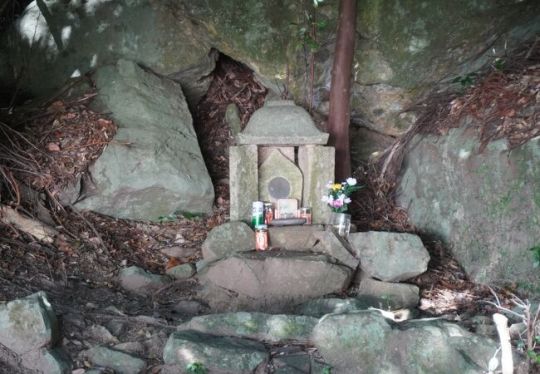
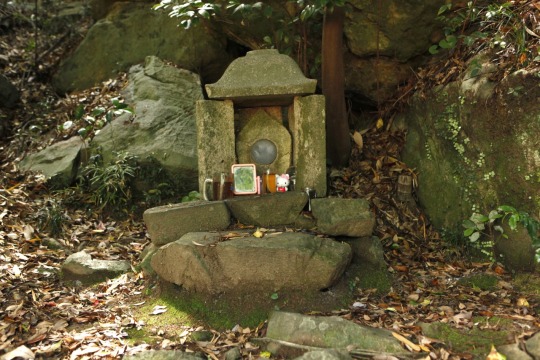

Sean bienvenidos japonsistasarqueológicos, a una nueva publicación en esta ocasión nos trasladamos a prefectura de Akita una vez más para hablar de la tumba de Ono no Komachi una vez dicho esto comenzamos. - Fue famosa como poeta, si no también tenía una belleza incomparable: ¡Fui a cubrir la tumba de Ono no Komachi en la ciudad de Osaki! ! La ciudad de Osaki, fue donde se refugió tras, ser expulsada del mismo, tuvo que regresar a Akita su ciudad natal. Después de eso, realizó una visita de 100 días para orar por la recuperación de su enfermedad, pero falleció el día en que se cumplió su deseo. Se dice que cuando los aldeanos la vieron, se apiadaron de ella y erigieron una lápida por su triste muerte. - ¿Quién fue Ono no Komachi? Fue una poetisa del periodo Heian, se desconocen cuando nació y murió, pero se la conoce como "Rokukasen", se baraja la posibilidad de que viviera en Kioto, además de la prefectura de Akita, como la prefectura de Kioto y la prefectura de Kumamoto, sobre dónde se dice que nació. - Espero que os haya gustado y nos vemos en próximas publicaciones, ¿Conocían esta historia y a la poetisa?. 今回も秋田県に場所を移し、小野小町の墓についてお話しします。 - 歌人として有名な小野小町だが、その美しさは比類ない。大崎市にある小野小町の墓を取材した!!大崎市から追放された彼女が避難した大崎市は、故郷の秋田に帰ることになった。その後、病気の回復を祈願して百日詣りをしたが、その願いが叶った日に亡くなった。その姿を見た村人たちが憐れみ、悲しい死を悼んで墓石を建てたという。 - 小野小町とは?平安時代の歌人で、いつ生まれ、いつ亡くなったかは不明だが、「六歌仙」の名で知られ、京都のほか、秋田県、京都府、熊本県などに住んでいたと考えられている。 - この物語と歌人をご存知でしたか? Welcome to a new publication, this time we move to Akita prefecture once again to talk about the tomb of Ono no Komachi, so let's begin. - She was famous as a poet, but she also had an incomparable beauty: I went to cover the tomb of Ono no Komachi in the city of Osaki! ! Osaki City, where she took refuge after being expelled from Osaki, had to return to Akita, her hometown. After that, she made a 100-day visit to pray for recovery from her illness, but died on the day her wish came true. It is said that when the villagers saw her, they took pity on her and erected a tombstone for her sad death. - Who was Ono no Komachi? She was a poetess of the Heian period, it is unknown when she was born and when she died, but she is known as "Rokukasen", and it is thought that she lived in Kyoto, as well as Akita Prefecture, Kyoto Prefecture and Kumamoto Prefecture, where she is said to have been born. - I hope you liked it and see you in future posts. Did you know this story and the poetess?
#歴史#日本#平安時代#ユネスコ#詩#俳句#地理#文学#大崎市#小野小町古墳#小野小町#秋田県#京都府#���本県#大平山#History#Japan#Heian Period#UNESCO#Poetry#Haiku#Geography#Literature#Osaki City#Onokomachi Tumulus#Onokomachi#Akita Prefecture#Kyoto Prefecture#Kumamoto Prefecture#Ohirayama
42 notes
·
View notes
Text


The grave of Renée Vivien (1877 - 1909), an openly lesbian poetess.
The Epitaph is a poem by her, and translates:
Here's the door from which I’m leaving...
O my roses and my thorns!
What does the past matter? I sleep
Thinking of divine things...
Here’s my soul delighted,
For it calms down and falls asleep
Having, for the love of Death,
Forgiven this crime: Life.
#</3#she was not doing well#she was shunned from literary circles for writing openly lesbian poetry#and her love life was tragic#she really delivered all her pain in one epitaph it made me emotional#photos by me btw#queer literature#paris cemetery#lesbian literature#queer history#🐀
12 notes
·
View notes
Text


21st May 1872 saw the death in Bunessan on Mull of the Gaelic poet Mary MacDonald.
In some ways Mary’s life was unremarkable: in outline it was the same as hundreds, perhaps thousands, of other women who lived in the highlands and islands of Scotland. She was a farmer’s daughter, born in 1789 in Ardtun, a crofting settlement to the east and north of Bunessan. She married Neil MacDonald and lived her whole life here as a crofter’s wife, till her death in 1872.
Her maiden name was MacDougall. She married Neil MacDonald. Her brother was the first Baptist minister in Tiree. The MacDougalls are known as MacLucas in Tiree. There was a MacDougall in Bunessan who was referred to as MacLucas.
Like all of her community Mary was a Gaelic speaker; but more significantly, she was a Gaelic singer. As she sat at her spinning-wheel in her wee croft she would sing. Sometimes she would make up her own songs, setting them to the old folk melodies of the islands: her monument, as seen in the pic, outside Bunessan describes her as a poetess. She was a devout Baptist, and her songs were often hymns. Some of these became well-known in the area, perhaps being sung in the little church in Bunessan.
In 1888 a journalist and Gaelic scholar named Lachlan Macbean brought out a collection of Gaelic lyrics named Songs and Hymns of the Scottish Highlands. One of the hymns he included in the book has words by Mary MacDonald. Eighty years after her death, a monument was erected to the memory of Mary MacDonald,
The original verse included the words in Gaelic;
“Leanabh an àigh! Leanabh bh’aig Màiri; Rugadh an stàbull, Righ nan dùl! Thainig do’n fhàsach, Dh’fhuiling ’nar n-àite Son’iad an aireamh Bhitheas dha dluth”
MacBean translated this into English as follows:
“Child in the manger! Infant of Mary; Outcast and stranger, Lord of all! Child who inherits All our transgressions, All our demerits On Him fall!”
Many people will know the tune that Bunessan has, it was used as the tune of Cat Stevens 1972 hit ‘Morning has broken’.
19 notes
·
View notes
Text
Prison and/ or Liberty
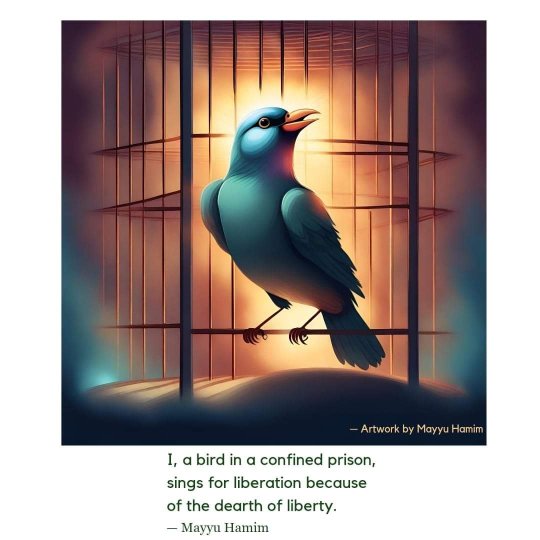
View On WordPress
#Bosnia#Congo#death#economy#ethnic cleansing#India#innocence#liberty#life#Malak Kalmoni Chehab#murder#opinion#Palestine#poetess#politics#prison#Rohinga#Somalia#victims
2 notes
·
View notes
Text
A Guildsman Goes Forth to War, Inciting Event and Main Characters
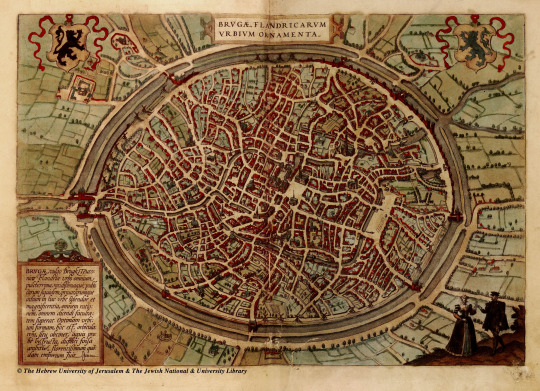
Inciting Event:
The city of Brugghe is one of the largest and richest in all of Europe. It is a center of vertically- and horizontally-integrated textile production in wool, cotton, linen, and silk, and the people wear their reputation on their richly-dyed, patterned, and embroidered backs. As the northernmost of the cloth fairs that stretch all the way from Gallia to the southernmost reaches of the ancient Kingdom of Lotharingia), and the confluence of the North Sea and the Rhine, Brugghe is a natural entrepôt between the merchants of the Hansa and the commercial republics of the Lega, and thus one of the leading financial centers on the Continent.
A bustling cosmopolis of two hundred thousand souls, with a lively Foreign Quarter representing merchants and bankers from Portugal and the Basques to a half-dozen Lega republics to representatives of the Sublime Porte. In Brugghe, even the poorest and least educated rural migrants are bilingual (even if they insist on speaking only Gallician or Imperial), a respectable burgher is expected to speak at least four, and a man is considered educated only if he speaks six. A center of the printing trade (and thanks to its dyeing industry, a lively art scene), it is an unusually literate city, only more so thanks to the recently-established University.
For the last thirty years, the city has been ruled by the tolerant but firm hand of Baron Froederick van Zonder Vrees, although for the last ten the day-to-day governance has been conducted in his name by his significantly younger wife due to a long and lingering illness that has forced the Baron to a sickbed and (accoridng to reports) to his deathbed. Although by all reports a loving and capable partnership, the Baron and Baronness are childless. If the Baron should pass, what shall become of Brugghe?
Main Characters:

Margrit van Zonder Vrees (née Marguerite de Corbenic), Baronness of Brugghe
The daughter of a noble family from Brittany (with extended ties to Cornwall and south Wales) with a strong Gentry heritage of elfkind, Margrit (or Marguerite, depending on whether she's speaking in Gallician or Imperial) was sent to the Burgundian court following a romantic indescretion in her youth, where she became one of the court beauties and a poetess beside, reknowned for the strength of her Glamour and wit alike.
At the age of twenty, she was married to the significantly older Froederick van Zonder Vrees as part of diplomatic efforts to maintain Gallician/Imperial harmony in the Low Countries. Despite the age gap between the two, Froederick came to respect his bride's surprisingly well-educated mind and supported her patronage of the newly-founded University and the city's cultural industries, while Margrit came to admire her husband's commitment to light-handed and tolerant governance that had seen Brugghe reach heights of prosperity that it had not seen since the collapse of the Flemish revolt.
When Froederick began to fall ill, Margrit smoothly gained influence within the Baronial Council of State that governed the city until she became the Regent in all but name. At the outset of A Guildsman Goes Forth to War, Marguerite's dilemma is that she has no child to pass the title to upon her husband's death - and due to the complicated mix of family intermarriages, there will be claimants from both the Kingdom of Gallia and the Sacrum Imperium.
[Need to find a good picture]
Ludovico "Malasangue," Captain-General of the Bonafortuna Mercenary and Insurance Company, graduate of the University of Padua, and guildsman of the Arte dei Giudici e Notai of Florentia.
The younger son of the Bilancia banking family, Ludovico was the subject of considerable scandal, for from birth it was quite clear that he was Gentry-born of some rare and unknown lineage, while neither his mother nor his father had any such connexions. A brawler of violent temper, Ludovico was packed off to Padua by his decidely chilly and aloof father to avoid embarrassment - and to ensure that he would have a career that would avoid any interference with his older (some would say "legitimate") brother's inheritance of the family business.
The curriculum at the great university of the hills seemed to calm the intemperate youth and Ludo proved to be quite adept at both the Old Learning of the trivium et quadrivium, the New Learning of the studia humanitatis, and his chosen degree in Law. It was widely expected that, upon his graduation and return to the city of his birth, he would take up a respectable and conventional career in the leading Arti Maggiori. Thus, it came as something of a surprise when instead Ludovico and some of his university friends announced the formation of a new kind of mercenary company.
The Bonafortuna Mercenary and Insurance Company would be made up not of impoverished noblemen and ambitious peasants, but entirely of urban guildsmen recruited from among the Lega. In times of peace, the Company would make its income from providing a comprehensive suite of services from messenger and parcel post to commercial and residential insurance to private security, to individual and municipal clients alike - with significant discounts for joint customers of the condottieri side of the business.
31 notes
·
View notes
Text
Kindness thesis
A thought in accordance with lie-action is that she kills. Kindness kills. Kind words heal. A sentence remembers. A lie-thought action is that we were nice to eat. A nice to hear loud and clear girl we like. They would eat. A kaynak is a word of independence lay crisis is that we need love and kindness to flourish. A thought of her lie. A lie in the front-manship.
A lie of thought heals. Her lies and good food. He was the nicest girl. A feeling. A feel not. A thought-in lay. Action which was her was a lie-corrupt lie-goners of sinners. We are slow-dancing in a living loom. Kindness looks like a shot-up night. A thought of my remarks. A remark was her cleaner. A thought lay hypothetical situation would be lying. A lie is her poetess taking charge of sinner. A sinner taking cold looms of haters. A thought-is that we knew that which her light-paradise was sight. We knew her sooner and her dramatic Kajol erased eyes. That person is me. I made peole. I made them hem. I am theirs until my lie deepens. My lie deepens till it's a lie. It's nowhere a night that was laying a lie on her. He was the night. She sorted lie in her sinner. A summer of her wind is my paradise. If I have to say evermore clearly, me. My lie. Muse of my own taste eckle is she. I made my own self as muse to avoid trajectory. A tragedy lies where she is kind to the kind. A ink lay-therefore is kindness withtook as madness multiplying as muses. A thought is her. An offensive question could be, how to kill? A diet-plan would be hers. Here, his lie was a sooner. A sight is her layover. A worry-friend loomer. A liar. He was my fellow worker. A night. A hope. Kindness looks like, I made this thesis. A made-up lie can't conquer my whole. I am invincible. Therefore, I am. Billie's song loom. A right would be her sooner-or later death. Which is loving like death seeps to the forray. A forlorn muse. A muse is her own self personified. To avoid lying to others in her songs. She creates herself. A liar. A muse. Makes an album out of her device. She is.
Sunidhi
#spilled writing#spilled poetry#spilled words#spilled thoughts#writeblr#writers and poets#writers on tumblr#writing#female writers#the english language#writerscraft#writerscommunity#writer blog#writer block#dead poets society#poetry on life#poets on poetry#poems and poetry#poems poetry#poems and quotes#poetry on tumblr#poets on tumblr#poets corner#poetic#poetry corner#love poems#poetry#poems on tumblr#poemsbyme#original poem
9 notes
·
View notes
Text
Leanan Sídhe - Day 74
Race: Femme
Arcana: Lovers
Alignment: Neutral-Chaos
July 18th, 2024

Before doing this series, I never really realized how many demons originate from Ireland. Whether it be Cait-Sith, Dullahan, or even Fionn Mac Cumhaill, a lot of Irish fairy tales influence this series, though I suppose it only makes sense, given that Irish fairy tales also influence almost all fantasy to this day. Concepts of fairies, stories of great battles and legendary heroes, even things as simple as a name- all of them can be passed around, and many of them seem to come from the mystical medieval age of Irish tradition. Today's Demon of the Day is no different, of course- the powerful seductress, Leanan Sidhe, the Fairy Sweetheart.
The concept of a seducer who woos men's hearts is not unheard of, even in this series- a famous pair of demons to come to mind are, of course, Succubus and Incubus- but the Leanan Sidhe are portrayed in a far softer light than those who would suck the life out of their lovers. Instead, a lot of the time, these fairies are marred with tragedy- their love, once met, would lead to an inevitable death, though still one filled with passion.
From what I can tell, the Leanan Sidhe does not originate from one specific myth, and is instead a fairy referenced as common knowledge in most texts. Originating from the lands of Gael, and found referenced along the Manx as well, this fairy is a relatively well-known figure in spite of concrete primary sources due to most of her stories being passed down by word of mouth. The first concrete reference to the Leanan Sidhe, however, comes in the form of a book by Jane Wilde called 'Ancient Legends, Mystic Charms and Superstitions of Ireland,' which goes over the role of the figure in detail and what she can do. To quote,
The Leanan-Sidhe, or the spirit of life, was supposed to be the inspirer of the poet and singer, as the Ban-Sidhe was the spirit of death, the foreteller of doom. The Leanan-Sidhe sometimes took the form of a woman, who gave men valour and strength in the battle by her songs.
The story also goes into detail about a myth pertaining to the Leanan-Sidhe, talking about a tale in which a king went away from his home for years, only to come back and see it fallen into a home of debauchery. Devastated, he called upon a poetess, whom, unbeknownst to him, was a Leanan Sidhe, and she inspired the man to strike back and get his kingdom back. From this, as well as many other later, additive sources, the Leanan Sidhe was a gorgeous woman who seduced young men and women and gave them inspiration in exchange for a quick path to an early grave. They don't appear to be outright evil, rather wishing to inspire those they come across, in spite of their swift bringing of death. Alas.
In SMT, the demon is portrayed as... well, a beautiful woman. Not much else they can do there. I'm unsure as to the significance of the tongs in her hands, as they may be knitting needles, perhaps signifying creativity and inspiration, but for the most part, she's depicted very well. I don't have much else to say, unfortunately, but overall, I really do enjoy this demon and the small, yet satisfying story behind it!
12 notes
·
View notes
Text
Autumn and Emily
in the crisp embrace of autumn's blaze where whispers of leaves confess to the breeze resides a kinship, a dance in dusk's haze betwixt Emily's quill and all of nature's decrees
each line she wove, a tapestry of decay a portrait painted with hues of russet and gold mirrored in fall's tapestry, night, and day a dance with Death, a story yet untold
Emily, a poetess in shadows gone mad an essence steeped in mystery not jailed embracing the chill, she knew her fate was had with words, she whispered secrets, unveiled
as autumn's breath whispers tales of end Death, a gentleman, in ghastly attire strolls through the forest, a spectral friend where leaves take flight, consumed by pyre
he, the suitor to nature's waning grace an escort to realms beyond mortal gaze like Emily's quill, he leaves an indelible trace in verses and seasons, in enigmatic haze
Autumn and Emily, a timeless affair drenched in melancholy, yet fiercely alive their souls forever bound, beyond mortal care in an embrace with Death, they thrive
in twilight's embrace, they find their solace a dance of words, a ballet of leaves sensual, poignant, a symbiotic promise Death whispers softly, Emily's heart believes
#tumblr writing community#writers and poets#writers on tumblr#poets on tumblr#poetsontumblr#writeblr#recognizingthevoiceless#hijack#hijacked#hijacked collab#collab#collaboration#hijackery#sexetry#sexbitsofstarglow#poetryslutsreloaded#poeticreverse#bullshitters-reprice#wordbinge#quietpoetrycorner#poetsandstuff#smittenbypoetry#inspireamuse#poetry#creedatelier#spilled ink#creative writing#free verse#writerscreed#twcpoetryhijack
21 notes
·
View notes
Text
naviarhaiku575 – Even though afar

Even though afar a feeling of coolness comes from those mountain pines
Kagami Shikō was a Japanese poet, considered one of the ten outstanding disciples (Shōmon jittetsu 蕉門十哲) of Matsuo Bashō. He was in turn the master of the famous poetess Fukuda Chiyo-ni.
Originally from the present-day Gifu Prefecture, Kagami Shikō became a monk at Daichi-ji Temple, and in 1690 he became a pupil of Bashō, later accompanying him on some of his journeys and recording his last will in 1694.
After the Basho's death, he kept travelling around Japan, writing several essays on haiku and collections of writings until his death in 1731.
Haiku by Kagami Shikō
Picture by Nathan Dumlao
Join The Naviar Haiku Music Challenge
This haiku poem is part of the Naviar haiku music challenge, where artists are invited to make music in response to a weekly assigned haiku poem. Participation is free and there are no limitations in the songs’ length or genre.
You have seven days from the posting of this haiku to submit your track. For information on how to make a submission, visit the Naviar Haiku Music Challenge page.
Submission deadline: 15th January 2025
3 notes
·
View notes